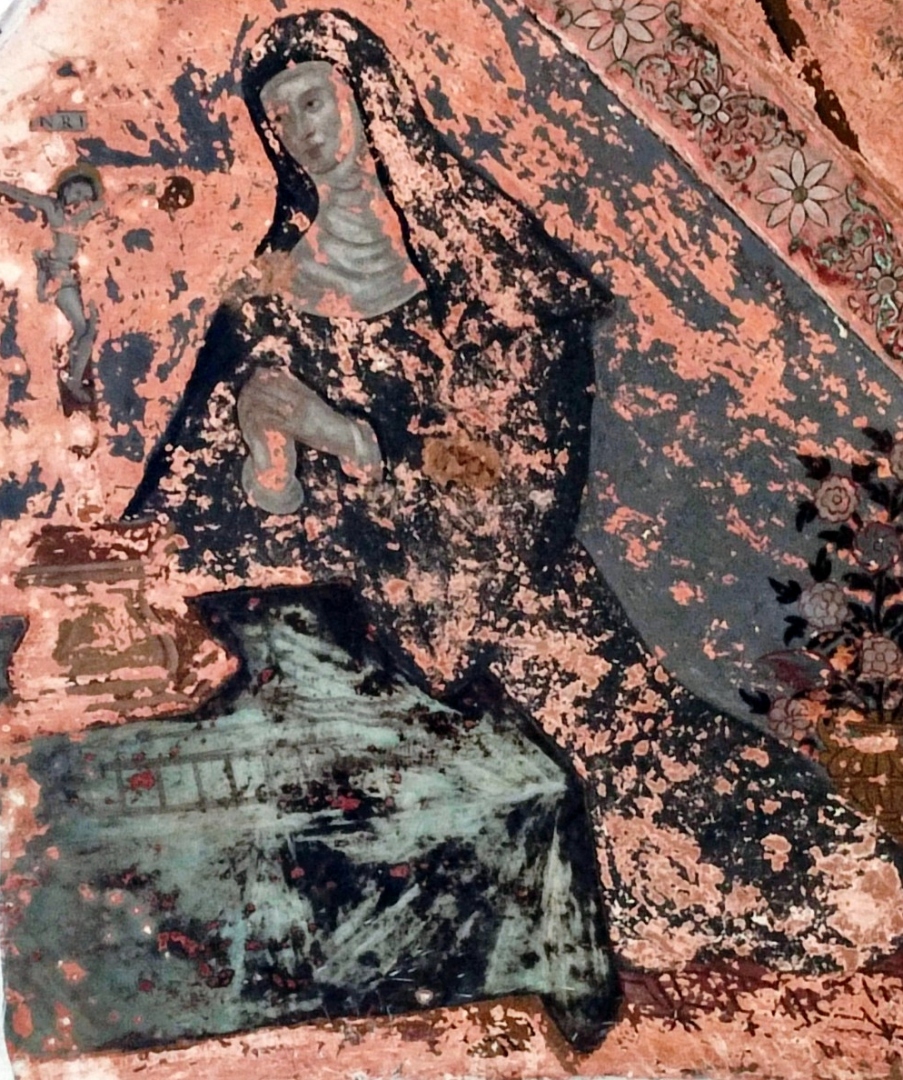
A possible depiction of Servant of God Sr Philippa da Trinidade from the Santa Monica Convent n Old Goa.
The Church in Asia cannot exist without the contribution of the nuns and a rough estimate suggests that around 25,000 nuns are serving in India alone.
However, the pride of having the first-ever Catholic nunnery in Asia goes to Old Goa. It was on July 2, 1606, that the Convent of Santa Monica, the first-ever Roman Catholic nunnery in Asia, was set up by Archbishop D Aleixo de Meneses in Old Goa. He started it amid various opposition from many men of that age who had a patriarchal and chauvinistic thinking that women in the Orient cannot live a life of chastity proper for a religious life. This convent had nuns from various places such as Goa, Sri Lanka, Malaysia, Japan etc.
Who was the first ever Catholic nun in Asia? Interestingly, the very first vocation to the Convent of Santa Monica was the noblewoman D Philippa da Ferreira and her daughter D Maria de Sá. What was the story of her vocation?
D Philippa Ferreira was born at Ormuz in today's Iran, the daughter of Belchior Cerniche and Elena Mendes. Ormuz was under the control of the Portuguese till 1622. Though, she was of Portuguese descent, her parents were like many of the Portuguese who had left their mainland and settled in the Orient for many years. This servant of God was a daughter of the Orient, though of foreign extraction.
She married Gaspar Lousada de Sá of Thana, Mumbai about 1580. A daughter was born to them on June 7, 1589, and when the child had reached her sixth year, her father died.
D Philippa was grieved and gave up the world and its lust and its pride. Having one day fallen sick, she made a vow to go to Bassein (Vasai) and perform a Novena in honour of St Nicolas of Tolentino in the church of the Augustinian monks in that city. Here, she was noted by the curate of the church, Frei Diogo de Sant Anna, for her virtues.
She along with her daughter were recommended by him to Archbishop D Aleixo de Meneses to be received as nuns. On the way from Bassein to Goa, they suffered a shipwreck and lost a considerable fortune.
But without losing their determination, they embarked on board another vessel and arrived in Goa in 1604. When the convent of St Monica was opened in 1606, Sr Philippa was appointed its first prioress. She took the religious name of Sr Philippa da Trinidade. Thus, she became not just the first-ever Catholic nun of Asia but also the first prioress of the very first Catholic nunnery in Asia.
She laboured zealously for the welfare of her own spiritual daughters in the Convent, especially after the departure of D Aleixo de Menses in 1612. She had a great devotion to a miraculous image of Menino Jesus (Baby Jesus). Her biography states that she underwent many persecutions even from evil powers and she remained strong until the end resisting them and overcoming them.
She died in 1626. The earliest hagiographic account published in 1699 states that she died on June 8 during the feast days of the Holy Trinity while the epitaph of her tomb in the convent and some other sources mention that it was on July 8 that she died. Her hagiography mentions her as "Venerable", while her epitaph mentions her as "Servant of God". It is clear that her cause of canonisation must have opened, but paralysed and her memory must have been venerated only within the convent.
Sr Philippa da Trinidade was a forgotten female saint of Goa. A forgotten first-ever Catholic nun of Asia. As her title "Servant of God" implies she must have also been the first woman Servant of God from India. This challenges the widely held theory that St Alphonsa of Kerala was the first woman in India whose cause of canonisation was put forward.
In any case, the life, witness and sanctity of this forgotten first Catholic nun of Asia is undoubtedly a forgotten star of Goan Catholic heritage.
(The writer is a Goa-based researcher on the Carmelite religious congregation)